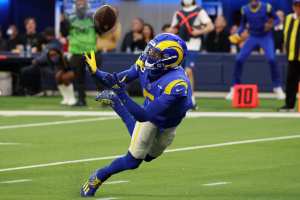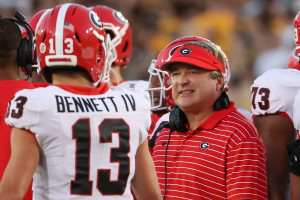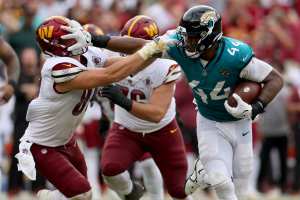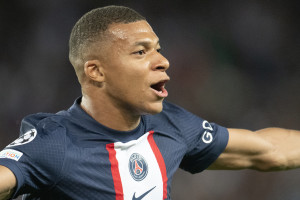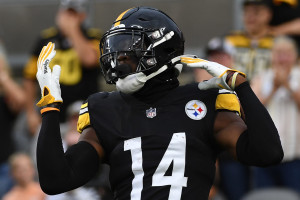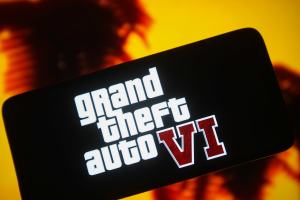NBA 2K23 Review: Gameplay Videos, Features and Impressions
September 12, 2022
NBA 2K23 has a chance to resemble an insurmountable lead in a critical Game 7.
The latest effort from the storied basketball series from developer Visual Concepts and 2K Sports is the second primarily aimed at next-generation consoles after the successful NBA 2K22.
Fittingly, Phoenix Suns star Devin Booker and the legendary Michael Jordan on various covers of the game speaks well to the offensive-minded gameplay tweaks and the depth of balance and era-spanning content found across a variety of game modes.
Just looking at what 2K23 offers on paper was enough to realize it had the potential to be the best entry in the series to date—it just had to pass the pick-up-and-play test.
Gameplay
We're at a point where 2K23's gameplay is actually a little intimidating given the depth of control a player has with the ball or even playing off-ball.
Sure, the game remains plenty accessible. But the broad-encompassing changes to multiple systems makes for some eyebrow-raising depth and creates an obvious skill gap.
None of this is a bad thing, either. The upgrades to the pro stick that enable more precise control while slashing to the hoop are a straight-up blast. Throwing mix-ups like switchbacks and Eurosteps into a cut keeps things engaging and strategic. Ditto for more in-depth at-the-rim controls, which give players control over the type of layup or dunk attempt as opposed to just leaving it up to a pre-canned animation.
While last year was a rangy shooting fest, offensive gameplay tweaks don't only favor slashers. There are five new shot meters to choose from this year, and it's actually fun to experiment with the new feel to each. New feedback via shot arcs shows where a player went wrong, which is nice. Simply more metrics going into whether a shot hits (timing, arc, a star's rating in the face of defensive pressure) is another nice step toward full-simulation status.
While the pro stick and shooting details make the headlines, it's the stamina system that feels like it has the biggest impact on the gameplay. Players get three sprint gauges dubbed "adrenaline boosts" per possession that get used up making complex moves or sprints.
Frankly, it's brilliant. This cuts down on move spam and some of the wildly unbalanced stuff that plagued online play for years. It even goes so far as to making matchups against the A.I. more realistic. But while actually an amazing idea, it does appear to have a rather notable hiccup—why does a speedy point share the same number of boosts with a 7'0" center?
Minor issues like that aside, all of this in tandem has helped to reduce some of those "skating" moments that were more video game silliness than actual simulation. And players zipping into unhuman changes of direction seem reduced right alongside the reduction of ability spam.
To top it all off, it does feel like some A.I. tuning has created adaptable opponents that can actually shift strategies and, for example, better clamp down on pick-and-roll spam. It's easy to see how a solid gameplay foundation has let the developers lean into more details fans will appreciate too—such as getting called for a violation for hanging on the rim too long after a dunk.
On the court, this is easily the best-feeling 2K ever. As is the annual case, it won't be immune to players finding cheesy strategies and such once the game is out in the wild, but this is a better starting point than potentially ever.
Graphics and Presentation
The photorealism of the series returns, albeit with a notable era-spanning twist.
Yes, the usual suspects reign supreme when looking at the product. The faithfully recreated superstars and arenas, details like sweat and jersey sway, and even innovative camera angles and broadcast presentation return with notable new approaches.
But it's the era-specific stuff that really shines in 2K23.
The attention to presentation detail on that front is downright fantastic. Taking part in an 80s-based game means the fuzzy cable-television broadcast package, including era-specific stat boxes and more. Ditto for the 90s or 2000s.
Some might poke holes, of course. It's simply unrealistic for every single player from every era to have accurate face and body models. But it's such a treat to either take a trip down memory lane or to experience it for the first time in video game form that it's hard to nitpick.
As a whole, 2K23 again slams down immersion in a way most sports games just don't thanks to the presentation package. Sound design plays a big role too, highlighted by great crowd and announcer reactions. The latter even rotates names in and out, which freshens the experience.
MyNBA, Features and More
The usual massive list of game modes return in 2K23, though one might argue it's MyNBA that takes center stage as the must-see mode.
There, the mentioned stunning era-specific presentation packages pair with likewise era-specific gameplay alterations and a jaw-dropping number of options to create a too-good-to-be-true scenario.
Sure, players can just link up with friends and run a modern league. They would enjoy the ability to control relocations, use created rosters and user-created draft classes, run the team count up to 36 teams, and a host of other options that would keep us here all day and then some.
But the modern era is hardly the only thing going on here. Players can set their mode down in the 80s, 90s or 2000s and flex those options. Want to see how Stephen Curry would play in the more physical 80s? It's there.
As a hybrid MyGM/Franchise type of mode with on-court gameplay that truly feels different given the time setting and perhaps the most robust options list we've seen from a game mode, MyNBA is a highlight.
This rolls nicely into the Michael Jordan Challenge, which hasn't been seen in a game since 2K11. But this time it has 15 different challenges to play and benefits greatly from the mentioned era-specific presentation and gameplay tweaks to form what is perhaps the best love letter to the sport found in a video game to date.
MyCareer will likely be a little more polarizing. There is a really solid storyline angle with the immediate introduction of a rival after a player's created character gets drafted. But again, the dialogue and interactions often register as corny.
If nothing else, a fresh leadership system lets a player choose a path before a game. Meeting that goal provides a bonus to the character and team, which is a nice mix-up to make goals players might have shrugged off in the past have an actual benefit.
MyPlayer is again the series heavyweight and this time comes equipped with some quality-of-life items that move things in the right direction.
A retooled badge system means players are now forced to use lesser badges early in a character's career. That, in theory, should cut down on only running up against players who have the very top badges and overpowered builds right on the game's release.
Also positive is the fact that purchased animations can now be shared across different characters because they are account-based, not tied to just one MyPlayer creation. It's a little give-and-take players deserved considering the rest of the game mode is still so seeded in pushing microtransactions.
The City returns to the mode in a thankfully smaller form and even includes critical details like fast travel stations. It's still funny to see all the different characters players create and turn loose there on new rewards like golf carts.
MyTeam throws out some fan services too. The six-week seasons keep things fresh for those who love the collect-a-thon. The long-requested addition of the Triple Threat mode getting online co-op has finally made it into a release, and it's as fun as expected. While underrated, the fact players can now take part in Clutch Time via a single-player experience is a highlight of the mode.
Like elsewhere, there's an emphasis on getting players to spend money, and the grind is quite, well, grindy. But the continued streamlined nature of the mode means more time build crafting and tackling as many challenges as a player might desire.
The W also returns with some must-haves as it continues to expand, this time boasting a playable All-Star Game and Commissioner’s Cup.
It's clear the effort to make the series as accessible as possible continues, too. A new “Semi-Pro” difficulty that settles nicely between "Rookie" and "Pro" difficulties aims at a smoother onboarding process for new players.
On the technical side, the game isn't without its framerate drops, most notable in The City. With any luck, that gets ironed out as the game's lifecycle continues.
Conclusion
When running down the list of possible upgrades or fan requests for NBA 2K23, chief among those would be more detailed gameplay, especially on offense, an expansion of history-spanning experiences, requested additions to the biggest modes and a better learning curve for new players.
NBA 2K23 checks all those boxes.
It's not a perfect package, by any means. Microtransactions litter the experience still, and incremental annual upgrades like most sports games means not every mode feels like it was overly addressed.
But as a whole? This is the blueprint for sports games. The hard work in past years to establish such a strong foundation means dialing in on details and fan requests. The end result is the best game in the series to date.
B/R Recommends






